Home>Storage Ideas>Storage Baskets>What Are Wicker Baskets Made From?
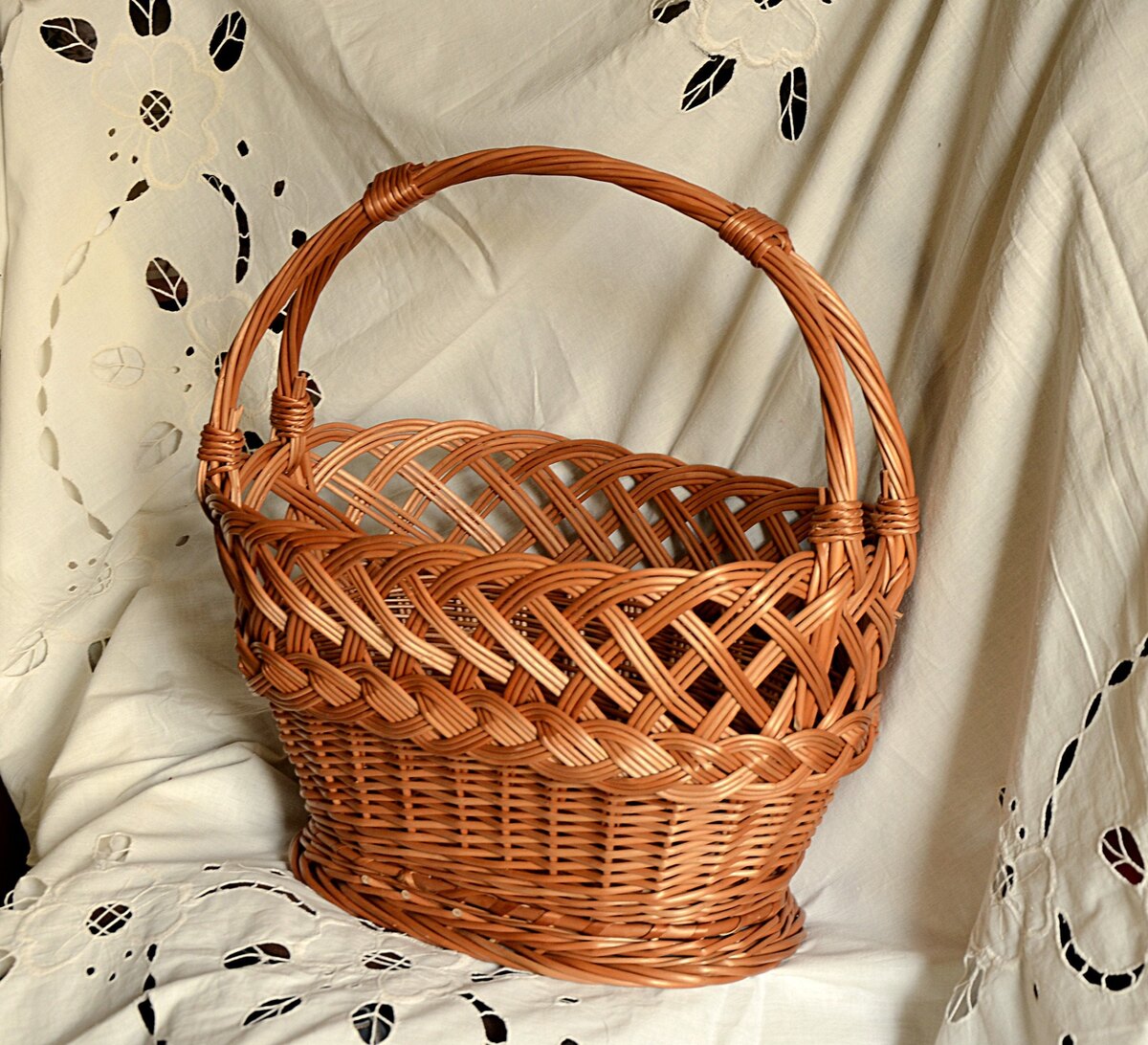

Storage Baskets
What Are Wicker Baskets Made From?
Modified: August 30, 2024
Discover the materials used to create wicker storage baskets and choose the perfect option for your needs. Explore the durability and style of these versatile storage solutions.
(Many of the links in this article redirect to a specific reviewed product. Your purchase of these products through affiliate links helps to generate commission for Storables.com, at no extra cost. Learn more)
Introduction
Wicker baskets have long been cherished for their timeless beauty and functional appeal. These versatile storage baskets are not only practical for organizing spaces but also add a touch of elegance to any room. But have you ever wondered what wicker baskets are made from?
Wicker refers to a weaving technique that involves interlacing materials to create a sturdy and visually appealing structure. Wicker baskets can be made from a wide range of natural materials, such as rattan, bamboo, willow, reed, and seagrass. There are also synthetic materials, including resin, plastic, and synthetic rattan, that are used to craft wicker baskets. Each material has its own unique characteristics, contributing to the overall look and durability of the baskets.
Join us as we explore the various materials used in wicker basket making. Whether you’re a fan of traditional wicker baskets or interested in the modern synthetic options, this article will provide you with a comprehensive understanding of what wicker baskets are made from.
Key Takeaways:
- Natural materials like rattan, bamboo, willow, reed, and seagrass offer rustic charm, durability, and eco-friendliness, providing visually pleasing and environmentally conscious wicker basket options.
- Synthetic materials such as resin, plastic, and synthetic rattan offer enhanced durability, resistance to moisture and UV rays, and a wider range of designs and colors, making them practical and customizable storage solutions for indoor and outdoor use.
Read more: How To Clean Mold From Wicker Baskets
Natural Materials Used in Wicker Baskets
When it comes to crafting wicker baskets, natural materials are a popular choice due to their durability, sustainability, and rustic charm. Let’s take a closer look at some of the commonly used natural materials:
- Rattan: Rattan is a vine-like plant that grows in tropical regions. It is known for its flexibility, strength, and natural golden hue. Rattan wicker baskets are highly sought after for their elegant appearance and ability to withstand heavy use.
- Bamboo: Bamboo is a fast-growing plant with a remarkable strength-to-weight ratio. It is known for its smooth texture and light color, which adds a natural and serene touch to wicker baskets. Bamboo wicker baskets are not only sturdy but also eco-friendly, making them a popular choice among environmentally-conscious consumers.
- Willow: Willow is a type of tree with pliable branches that are ideal for wicker weaving. Willow wicker baskets are known for their beautiful shades of brown and natural warmth. They have been used for centuries, providing a classic and timeless appeal.
- Reed: Reed is a versatile material used in wicker basket production. It is made from the stalks of aquatic plants and is known for its light and flexible nature. Reed wicker baskets can be found in various shapes and sizes, perfect for storing anything from laundry to toys.
- Seagrass: Seagrass is a marine plant that grows in coastal areas. It has a fine and smooth texture, making it an excellent choice for wicker weaving. Seagrass wicker baskets feature natural variations in color, ranging from light tan to dark brown, adding a touch of organic beauty to any space.
These natural materials not only lend a touch of nature to wicker baskets but also contribute to their strength and durability. Each material possesses unique characteristics that make it suitable for different purposes, ensuring a wide variety of options for consumers.
Rattan
Rattan is a versatile material widely used in the production of wicker baskets. It comes from the climbing palm plant that is native to tropical regions, particularly Southeast Asia. Rattan is known for its durability, flexibility, and natural beauty, making it a popular choice among basket weavers.
One of the key characteristics of rattan is its strength. The sturdy nature of rattan makes it ideal for creating durable wicker baskets that can withstand daily use. Rattan fibers are tightly woven together, resulting in a robust structure that can hold a significant amount of weight.
Another advantage of using rattan is its flexibility. The supple nature of rattan allows artisans to create intricate weaves and unique designs. It can be bent and shaped in various ways, enabling the creation of wicker baskets in different sizes and shapes.
Additionally, rattan has a beautiful natural golden hue. This warm and earthy color adds an elegant touch to wicker baskets, making them visually appealing in any room. The natural variation in rattan’s color also adds depth and texture to the woven pattern, enhancing the overall aesthetic appeal.
Furthermore, rattan is considered an eco-friendly material. It is a renewable resource as the climbing palm grows back quickly after harvesting. This makes rattan an excellent choice for environmentally-conscious consumers who want to support sustainable practices.
Due to its strength, flexibility, and natural beauty, rattan wicker baskets are highly versatile. They can be used in various settings, including living rooms, bedrooms, bathrooms, and even outdoor spaces. Rattan baskets are perfect for storing items such as blankets, towels, toys, and decorative accessories.
Overall, when it comes to wicker basket making, rattan is a premium material that offers both functionality and elegance. Its strength, flexibility, and natural beauty make it a top choice for artisans and consumers alike.
Bamboo
Bamboo is a remarkable material that has been used for centuries in various applications, including wicker basket making. It is a fast-growing perennial grass that belongs to the family Poaceae. Bamboo offers a unique set of qualities that make it an excellent choice for crafting wicker baskets.
One of the key advantages of bamboo is its strength-to-weight ratio. Despite being lightweight, bamboo is incredibly strong and durable. This makes it ideal for creating sturdy and long-lasting wicker baskets that can withstand heavy use. Bamboo wicker baskets are known for their structural integrity and ability to hold a considerable amount of weight.
In addition to its strength, bamboo has a smooth and visually appealing surface. Its light color adds a natural and tranquil touch to wicker baskets, making them blend seamlessly with various interior design styles. Bamboo’s smooth texture adds to the overall aesthetic appeal of the baskets, creating an elegant and sophisticated look.
Bamboo is also known for its sustainability and eco-friendliness. It is one of the fastest-growing plants on Earth, capable of reaching maturity within 3-5 years. This rapid growth rate makes bamboo a highly renewable resource. As a result, using bamboo in wicker basket making helps promote sustainable practices and reduce the reliance on less environmentally friendly materials.
Furthermore, bamboo is naturally resistant to moisture, insects, and mildew. This inherent resistance makes bamboo wicker baskets suitable for both indoor and outdoor use. They can withstand exposure to moisture and changing weather conditions, making them perfect for storing items in bathrooms, patio spaces, or even near swimming pools.
Bamboo wicker baskets come in a variety of shapes and sizes, catering to different storage needs. Whether you need a small basket for organizing personal items or a larger one for storing blankets and toys, bamboo wicker baskets offer versatility and functionality.
In summary, bamboo is a remarkable material that brings strength, aesthetic appeal, and sustainability to wicker basket making. Its strength-to-weight ratio, smooth surface, and eco-friendliness make bamboo wicker baskets a popular choice among those seeking durable and visually pleasing storage solutions.
Willow
Willow is a versatile and widely used material in the craft of wicker basket making. It is derived from the branches of various species of willow trees, which are known for their flexibility and pliability. Willow wicker baskets have a long history and are cherished for their natural warmth and timeless appeal.
One of the distinctive characteristics of willow is its ability to bend without breaking. This flexibility makes it an ideal material for creating intricate weaves and decorative patterns. Artisans can easily shape and manipulate willow branches, resulting in beautifully crafted wicker baskets with unique designs.
Another notable quality of willow is its beautiful shades of brown. The natural color of willow ranges from light tan to deep brown, adding a touch of organic beauty to wicker baskets. This natural variation enhances the visual appeal of the baskets, making them visually interesting and pleasing to the eye.
Willow wicker baskets also exude a sense of warmth and coziness. The natural texture and earthy tones of the material create a rustic and inviting look that complements various interior styles. Whether placed in a farmhouse-inspired kitchen, a bohemian bedroom, or a cottage-style living room, willow wicker baskets add a touch of charm and character.
In addition to its aesthetic appeal, willow is highly durable. The branches of willow trees are strong and sturdy, making the resulting wicker baskets resilient and long-lasting. They can withstand daily use and retain their shape and integrity over time, making them ideal for storing a wide range of items.
Furthermore, willow is a sustainable and environmentally friendly choice for wicker basket making. Willow trees are fast-growing and can be harvested every few years without causing significant harm to the environment. This makes willow wicker baskets a sustainable alternative to synthetic materials that can have a negative impact on the planet.
Willow wicker baskets come in a variety of sizes and shapes, from small round baskets for holding jewelry to large rectangular baskets for storing blankets and pillows. This versatility makes them suitable for a wide range of storage needs and allows for easy integration into any room or space.
In summary, willow is a versatile and charming material that brings a natural warmth and timeless appeal to wicker basket making. Its flexibility, beautiful color variations, durability, and sustainability make willow wicker baskets a popular choice among those seeking a touch of rustic elegance in their homes.
Read more: What To Do With Old Wicker Baskets
Reed
Reed is a versatile and widely used material in the craft of wicker basket making. It is derived from the stalks of various aquatic plants and is known for its light and flexible nature. Reed wicker baskets offer a unique combination of strength, beauty, and functionality.
One of the key qualities of reed is its flexibility. The slender reed stalks can be easily bent and shaped, allowing artisans to create intricate weaves and designs. This flexibility enables the production of wicker baskets in various sizes and shapes, catering to different storage needs and aesthetic preferences.
In addition to its flexibility, reed is known for its strength. When woven together, the interlaced reed strands create a sturdy and durable structure. This ensures that reed wicker baskets can withstand regular use and retain their shape over time.
Another advantage of reed is its light color, which adds a natural and fresh look to wicker baskets. The neutral tone of reed complements a wide range of interior styles, from contemporary to coastal, making it a versatile choice for home decor. The light color also contributes to the visual appeal of the baskets, making them visually inviting and pleasing to the eye.
Furthermore, reed is a sustainable choice for wicker basket making. It is a renewable resource as it can be harvested without causing damage to the environment. This makes reed wicker baskets an eco-friendly alternative to synthetic materials that may have a negative impact on the planet.
Reed wicker baskets are highly versatile and can be used in various settings. They are commonly used for organizing and storing items such as magazines, toys, towels, and even laundry. The natural texture and flexible nature of reed make these baskets suitable for both indoor and outdoor use, adding functionality and style to any space.
Whether you’re looking to declutter your living room or add a touch of natural beauty to your bathroom, reed wicker baskets offer a practical and aesthetically pleasing solution. Their durability, flexibility, and natural charm make them a popular choice among those seeking functional and stylish storage options.
In summary, reed is a versatile material that brings a combination of strength, beauty, and sustainability to wicker basket making. Its flexibility, light color, and eco-friendliness make reed wicker baskets a popular choice among those looking to achieve an organized and visually appealing home environment.
Wicker baskets are typically made from natural materials such as willow, rattan, bamboo, or reed. These materials are woven together to create the basket’s structure.
Seagrass
Seagrass is a natural material that is increasingly being used in the craft of wicker basket making. It is derived from marine plants that grow in coastal areas, primarily in Asia. Seagrass wicker baskets offer a unique blend of natural texture, durability, and eco-friendliness.
One of the distinctive characteristics of seagrass is its fine and smooth texture. The slender strands of seagrass are tightly woven together to create a tight and visually appealing pattern. This natural texture adds a touch of organic beauty to wicker baskets, making them visually interesting and pleasing to the eye.
In addition to its aesthetic appeal, seagrass is known for its durability. The strong and resilient nature of seagrass fibers ensures that wicker baskets made from this material can withstand regular use. They are sturdy and structurally sound, making them perfect for carrying heavier items without compromising their integrity.
Seagrass wicker baskets also offer an eco-friendly option for storage. Seagrass is a renewable resource as the marine plants regenerate quickly in coastal areas. This makes seagrass wicker baskets a sustainable alternative to synthetic materials that may have a negative impact on the environment.
Furthermore, seagrass wicker baskets come in a variety of natural tones, ranging from light tan to dark brown. This natural variation in color adds depth and richness to the baskets, making them visually appealing and suitable for a wide range of interior styles. Whether placed in a bohemian-inspired living room or a coastal-themed bathroom, seagrass wicker baskets blend seamlessly with various decor schemes.
Seagrass wicker baskets are highly versatile and can be used in numerous ways. They are perfect for storing items such as blankets, pillows, towels, toys, and even plants. The natural texture and neutral hues of seagrass baskets add a touch of warmth and organic beauty to any space.
Whether you’re looking to add a natural element to your home or seeking an eco-friendly storage solution, seagrass wicker baskets offer a practical and visually appealing choice. Their durability, natural texture, and sustainability make them a popular option among those seeking functional and eco-conscious storage solutions.
In summary, seagrass is a versatile material that brings a unique blend of natural texture, durability, and sustainability to wicker basket making. Its fine and smooth texture, natural color variations, and eco-friendliness make seagrass wicker baskets a popular choice for those looking to incorporate organic beauty into their home decor.
Synthetic Materials Used in Wicker Baskets
In addition to natural materials, synthetic materials are also commonly used in the production of wicker baskets. These synthetic options offer a range of benefits, including increased durability, resistance to moisture and UV rays, and a wider variety of colors and designs. Here are some of the commonly used synthetic materials in wicker basket making:
- Resin: Resin is a synthetic material that is widely popular due to its durability and resistance to the elements. It can withstand exposure to moisture, UV rays, and harsh weather conditions, making it an excellent choice for outdoor wicker baskets. Resin wicker baskets are available in various colors and can mimic the natural look of rattan or other natural fibers.
- Plastic: Plastic is another commonly used synthetic material in wicker basket production. Plastic wicker baskets are lightweight, easy to clean, and highly durable. They are often preferred for their resistance to water, making them suitable for humid environments or outdoor use.
- Synthetic Rattan: Synthetic rattan is a man-made alternative to natural rattan. It offers the same elegant appearance and natural texture as its natural counterpart but with increased durability and resistance to moisture. Synthetic rattan wicker baskets are a popular choice for both indoor and outdoor use, as they can withstand various weather conditions while maintaining their aesthetic appeal.
One of the primary advantages of synthetic materials is their enhanced durability. Unlike natural materials, synthetic materials are less likely to deteriorate over time. They are resistant to mold, mildew, rust, and fading. This makes synthetic wicker baskets a practical choice for areas prone to high humidity or direct sunlight.
Additionally, synthetic materials offer a wider range of colors and designs. Unlike natural materials that are limited by their inherent colors, synthetic wicker baskets can be produced in vibrant shades or even in patterns. This allows for greater versatility and customization to suit various decor styles and personal preferences.
Finally, synthetic wicker baskets are often more budget-friendly compared to their natural counterparts. They offer a cost-effective option for those who desire the look and feel of wicker baskets without the higher price tag associated with natural materials.
While synthetic materials may not possess the same organic charm as natural materials, they provide practical advantages in terms of durability, resistance to the elements, and enhanced design options. This makes synthetic wicker baskets a popular choice for those seeking long-lasting and customizable storage solutions.
Resin
Resin is a synthetic material that is commonly used in the production of wicker baskets. It offers a range of benefits that make it a popular choice for those seeking durable and weather-resistant storage solutions. Resin wicker baskets combine functionality with style, making them suitable for both indoor and outdoor use.
One of the key advantages of resin is its durability. It is highly resistant to the elements, making resin wicker baskets suitable for outdoor spaces such as patios, decks, and gardens. Unlike natural materials that can deteriorate when exposed to moisture, UV rays, or harsh weather conditions, resin wicker baskets retain their strength and appearance over time.
Another advantage of resin is its resistance to moisture. Resin does not absorb water, making it ideal for areas where humidity is a concern. This moisture-resistant property helps to prevent the formation of mold and mildew, ensuring that the wicker baskets remain clean and hygienic even in damp environments.
Resin wicker baskets are also highly resistant to UV rays. Unlike natural materials that can fade or discolor when exposed to sunlight, resin maintains its vibrant color and appearance. This UV resistance ensures that the baskets retain their aesthetic appeal, even after prolonged exposure to the sun.
In terms of design, resin wicker baskets offer a wide variety of colors and styles. They can be found in various shades to match different decor preferences. Furthermore, resin allows for intricate weaves and patterns, providing a visually appealing and decorative touch to the baskets.
The versatility of resin wicker baskets extends beyond outdoor settings. They can be used indoors in areas prone to moisture, such as bathrooms or laundry rooms. The moisture-resistant nature of resin ensures that these baskets remain in excellent condition and continue to provide functional storage options.
One aspect to consider with resin wicker baskets is their lighter weight compared to natural materials. This makes them easier to move around and transport, offering convenience for users who may need to rearrange their storage or take the baskets on picnics or outings.
In summary, resin is a synthetic material that brings durability, moisture resistance, UV resistance, and a wide range of design options to wicker basket making. Resin wicker baskets provide a practical and stylish storage solution for both indoor and outdoor spaces, ensuring long-lasting functionality and visual appeal.
Read more: How To Bleach Wicker Baskets
Plastic
Plastic is a versatile and widely used synthetic material in the production of wicker baskets. Plastic wicker baskets offer an array of benefits, making them a popular choice for those seeking durable and easy-to-maintain storage solutions.
One of the key advantages of plastic is its durability. Plastic wicker baskets are highly resistant to wear and tear, making them suitable for heavy daily use. Unlike natural materials that may fray or deteriorate over time, plastic wicker baskets retain their structural integrity and appearance with minimal maintenance.
Additionally, plastic is a moisture-resistant material. It does not absorb water, making plastic wicker baskets ideal for areas prone to humidity or regular exposure to moisture. This moisture resistance helps prevent the formation of mold and mildew, ensuring that the baskets remain clean and hygienic.
Plastic wicker baskets also offer easy cleaning and maintenance. They can be easily wiped clean with a damp cloth or washed with mild soap and water. The non-porous surface of plastic prevents stains and allows for quick and effortless cleaning, saving time and effort for users.
An advantage of plastic wicker baskets is their resistance to fading. Unlike natural materials that can fade when exposed to sunlight, plastic maintains its color and appearance even after prolonged exposure to UV rays. This makes plastic wicker baskets suitable for outdoor use, as they can withstand the harsh effects of the sun without losing their vibrancy.
Furthermore, plastic wicker baskets come in a wide range of colors and designs. Whether you prefer classic neutrals or bold and vibrant hues, there is a plastic wicker basket to suit your aesthetic preferences. This versatility allows for easy integration into various interior styles and the ability to add a pop of color to any room.
Plastic wicker baskets are lightweight, making them easy to move and transport. This feature is especially beneficial for those who may need to rearrange their storage or take the baskets on picnics or outings. The lightweight nature of plastic wicker baskets ensures convenience and flexibility in their usage.
In summary, plastic is a durable, moisture-resistant, and easy-to-maintain material that brings convenience and versatility to wicker basket making. Plastic wicker baskets offer practical storage solutions for both indoor and outdoor use, providing long-lasting functionality and a wide range of design options.
Synthetic Rattan
Synthetic rattan is a popular choice for wicker basket making, offering a durable and versatile alternative to natural rattan. Synthetic rattan wicker baskets combine the classic elegance of rattan with increased durability and resistance to the elements.
One of the primary advantages of synthetic rattan is its enhanced durability. Unlike natural rattan, which may be susceptible to wear and tear over time, synthetic rattan is designed to withstand the rigors of daily use. This makes synthetic rattan wicker baskets highly resilient and able to maintain their structural integrity even under heavy loads.
Another benefit of synthetic rattan is its resistance to moisture. While natural rattan can absorb water and be prone to mold or mildew in humid conditions, synthetic rattan does not have these issues. This moisture resistance makes synthetic rattan wicker baskets suitable for both indoor and outdoor use, even in areas where humidity is a concern.
Synthetic rattan is also highly resistant to fading and UV damage. The synthetic materials used in its construction are designed to withstand exposure to sunlight without losing their vibrant colors or deteriorating. This UV resistance ensures that synthetic rattan wicker baskets maintain their aesthetic appeal and remain visually attractive for years to come.
Another advantage of synthetic rattan is its versatility in terms of design. It can be molded and shaped into various styles and patterns, allowing for a wide range of options when it comes to wicker basket designs. Synthetic rattan wicker baskets can mimic the intricate weaves and textures of natural rattan, offering a classic aesthetic with the added benefits of durability and longevity.
Furthermore, synthetic rattan is an environmentally friendly choice. By opting for synthetic rattan wicker baskets, you are reducing the demand for natural rattan, which can have a significant impact on forest ecosystems. Synthetic rattan allows you to enjoy the look and feel of rattan while supporting sustainable practices.
Synthetic rattan wicker baskets are lightweight, making them easy to move and rearrange as needed. This feature adds convenience and flexibility in their usage, allowing you to adapt your storage solutions to changing needs or preferences.
In summary, synthetic rattan offers a durable, moisture-resistant, and environmentally friendly option for wicker basket making. With its enhanced durability, resistance to fading and UV damage, and versatility in design, synthetic rattan wicker baskets provide a practical and visually appealing storage solution for both indoor and outdoor spaces.
Conclusion
Wicker baskets are a timeless and versatile storage solution that adds a touch of elegance to any space. Whether you prefer the natural charm of rattan, bamboo, willow, reed, or seagrass, or the durability and customization options of synthetic materials like resin, plastic, or synthetic rattan, there’s a wicker basket for every need and style.
Natural materials such as rattan, bamboo, willow, reed, and seagrass offer a rustic appeal, each with its own unique characteristics. Rattan provides strength and flexibility, bamboo brings a smooth and light texture, willow exudes warmth and timeless beauty, reed offers a light and flexible nature, and seagrass adds a fine and natural texture. These natural materials are not only visually pleasing but also environmentally friendly, as they come from renewable sources.
Synthetic materials such as resin, plastic, and synthetic rattan offer enhanced durability, resistance to moisture and UV rays, and a wider range of designs and colors. Resin wicker baskets are known for their outdoor durability and weather resistance, plastic baskets provide easy cleaning and maintenance, and synthetic rattan combines the classic charm of natural rattan with added sturdiness and longevity.
Whether you’re looking for a decorative piece for your living room, practical storage for your bathroom, or a durable solution for your outdoor patio, wicker baskets are a versatile choice. They are suitable for various styles and purposes, from organizing toys and blankets to holding laundry or showcasing potted plants.
By understanding the different materials used in wicker basket making, you can make an informed choice that best suits your needs, preferences, and values. Whether you opt for the charm of natural materials or the increased durability of synthetic options, wicker baskets will serve as functional and aesthetically pleasing storage companions in your home or outdoor spaces.
So, indulge in the timeless appeal of wicker baskets and enjoy the beauty and functionality they bring to your living spaces. From the natural elegance of rattan and bamboo to the durability of resin and plastic, there’s a wicker basket waiting to add that extra touch of style and organization to your daily life.
Frequently Asked Questions about What Are Wicker Baskets Made From?
Was this page helpful?
At Storables.com, we guarantee accurate and reliable information. Our content, validated by Expert Board Contributors, is crafted following stringent Editorial Policies. We're committed to providing you with well-researched, expert-backed insights for all your informational needs.
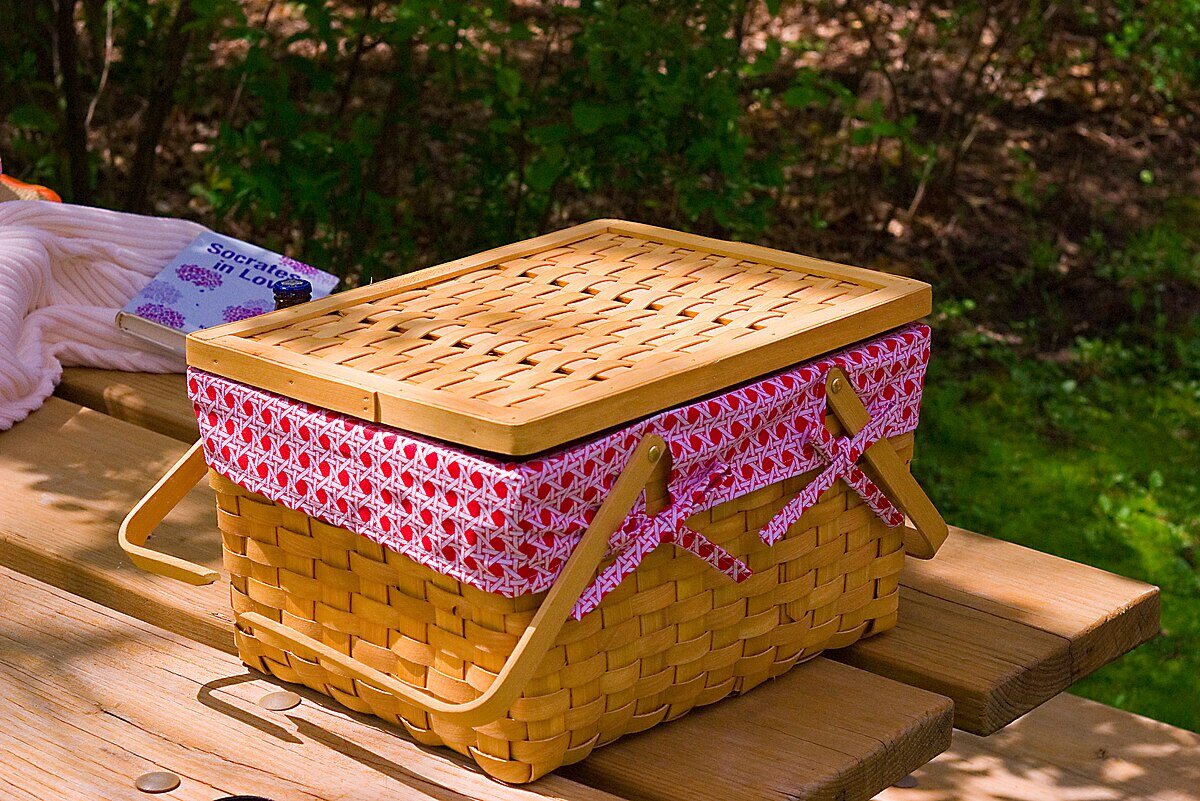
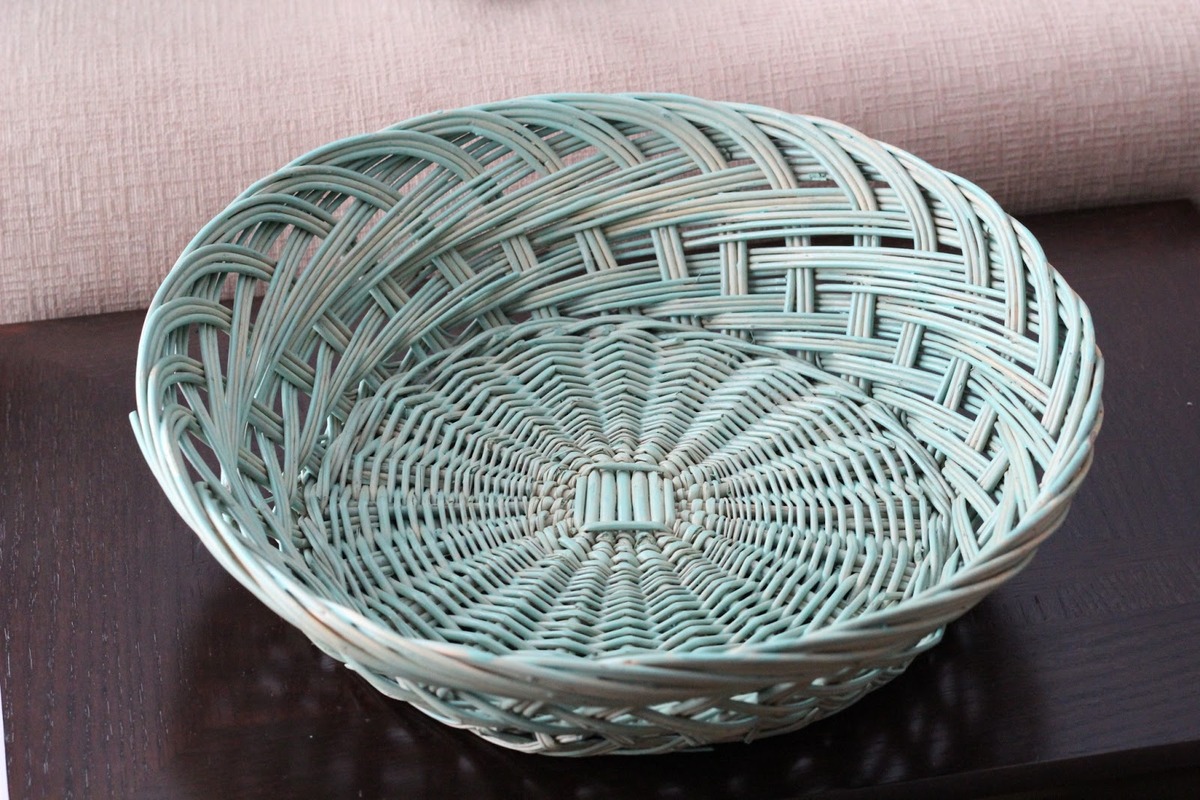
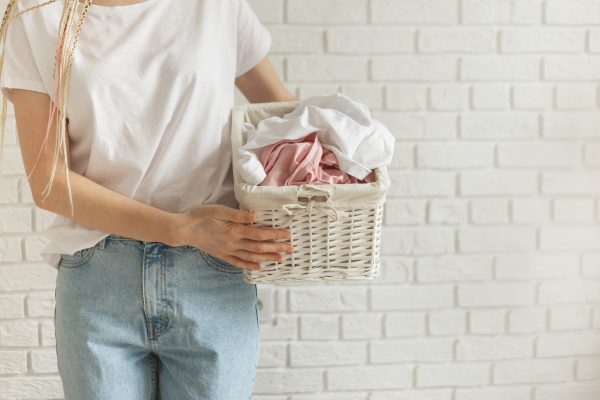
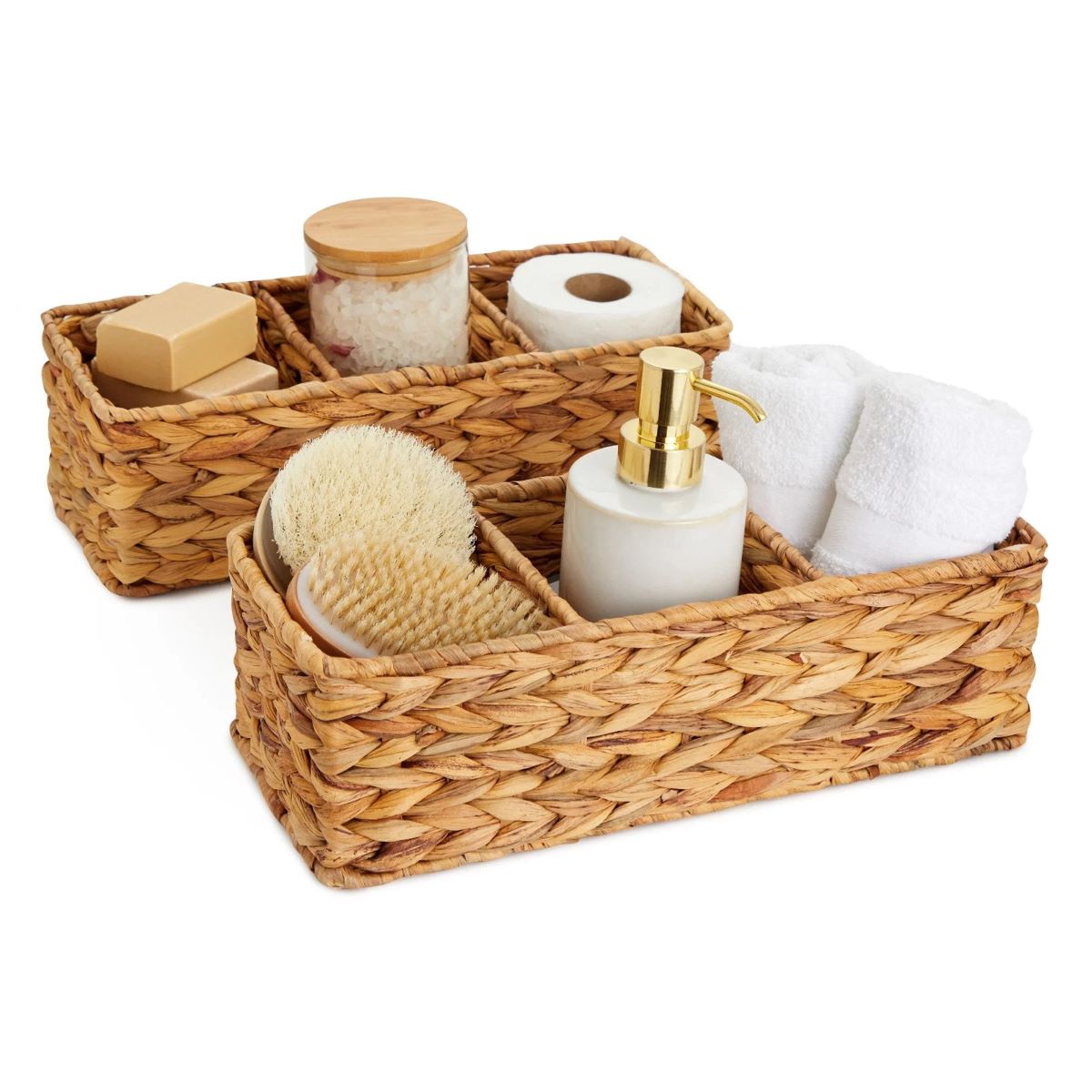

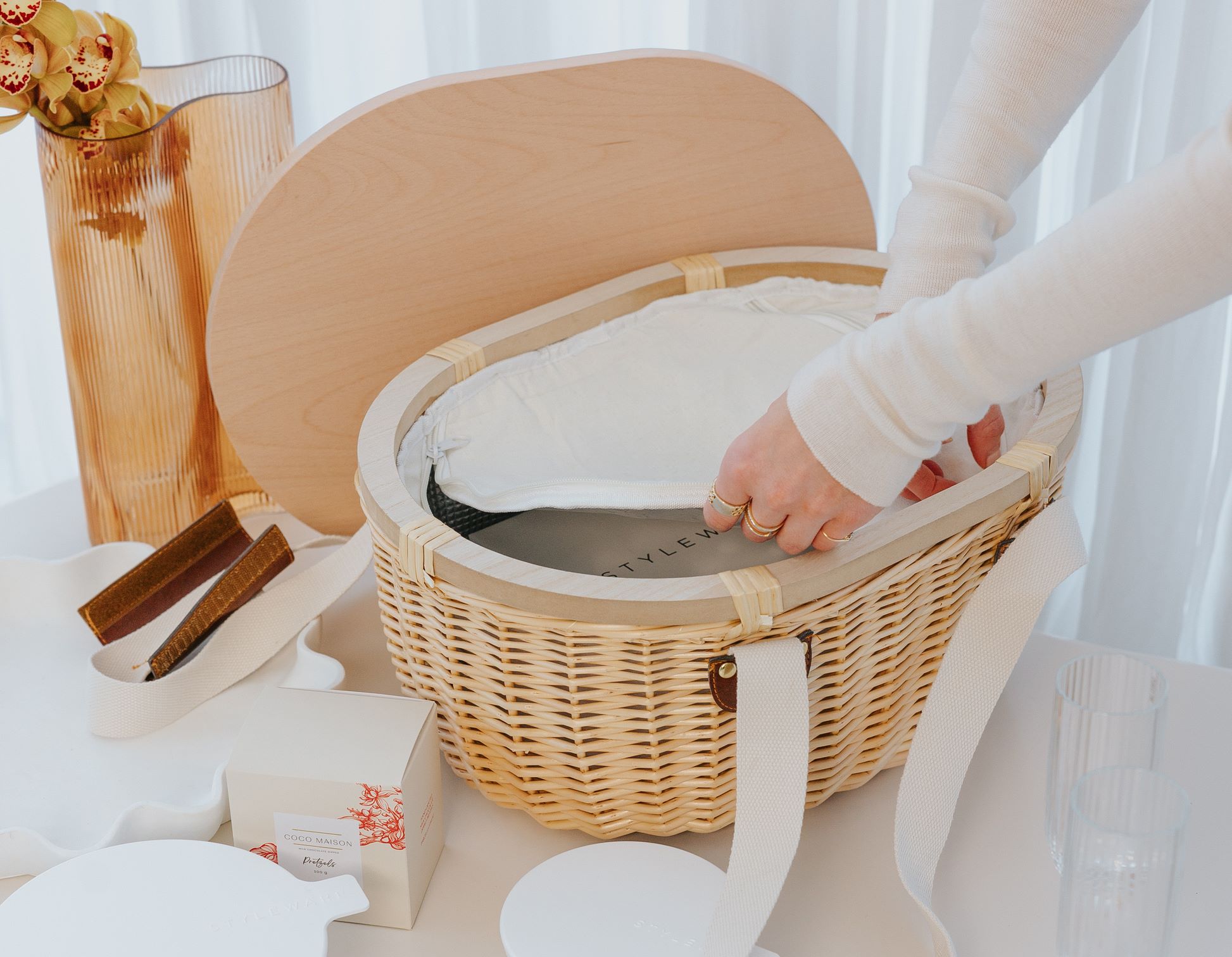
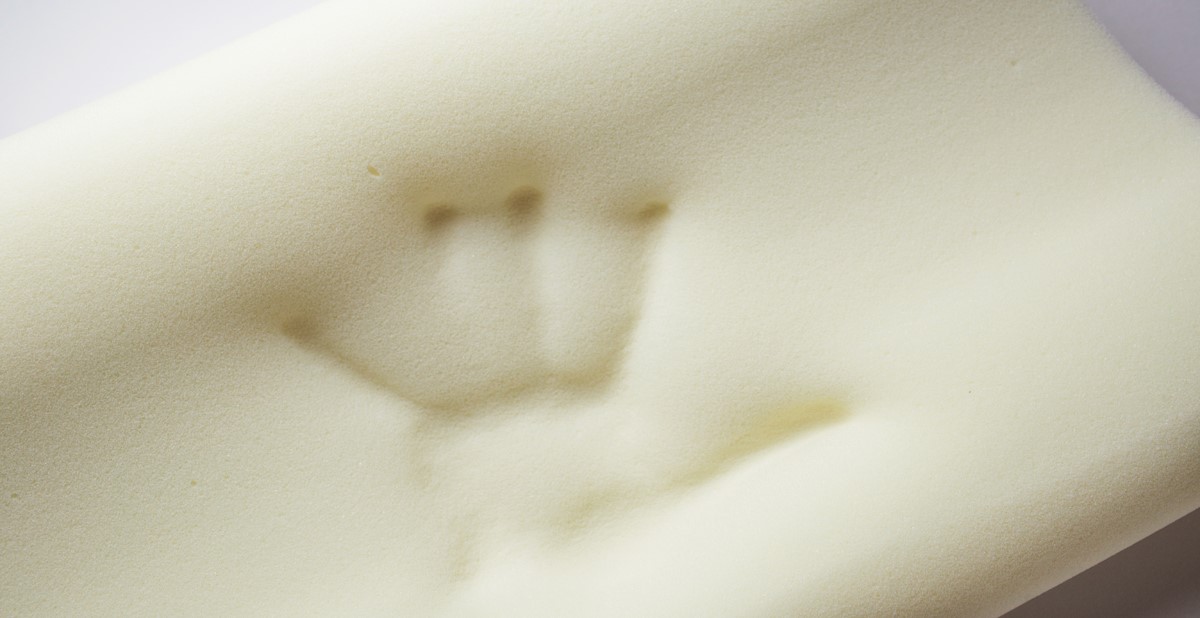
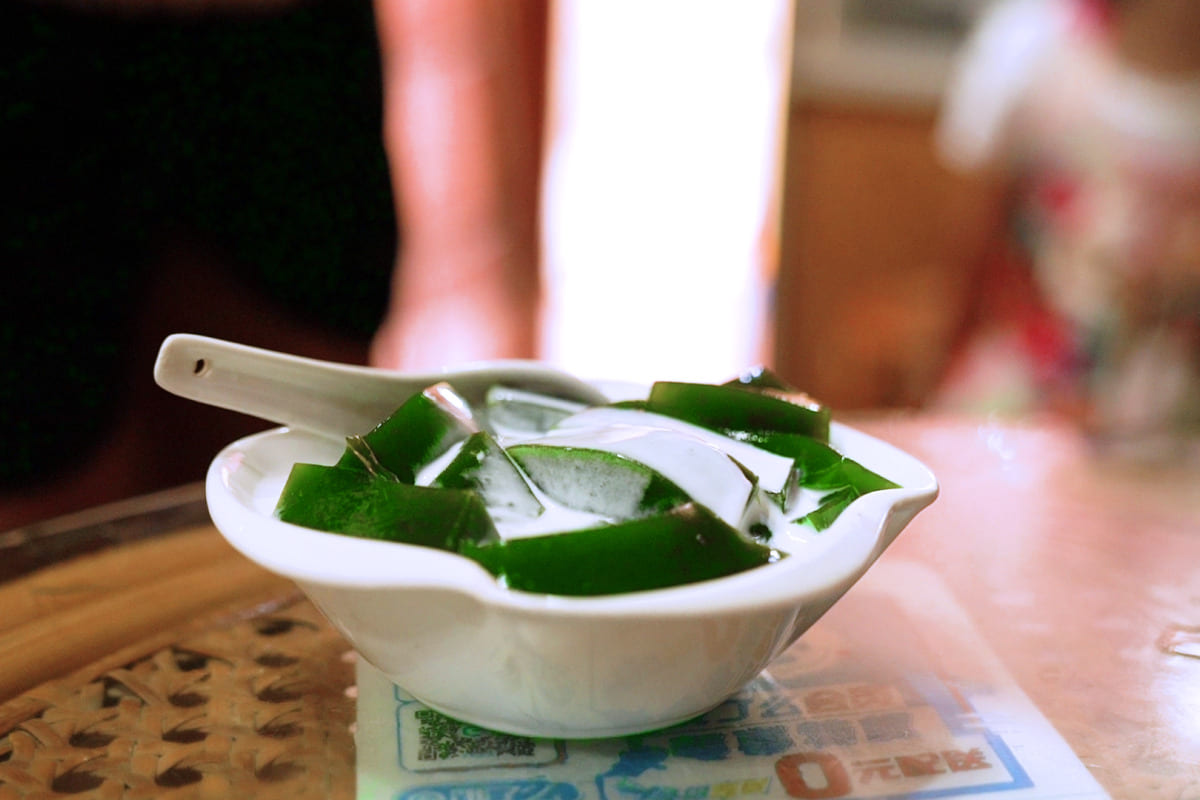
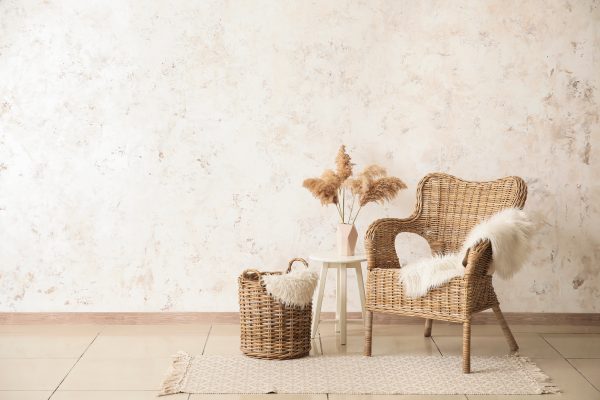

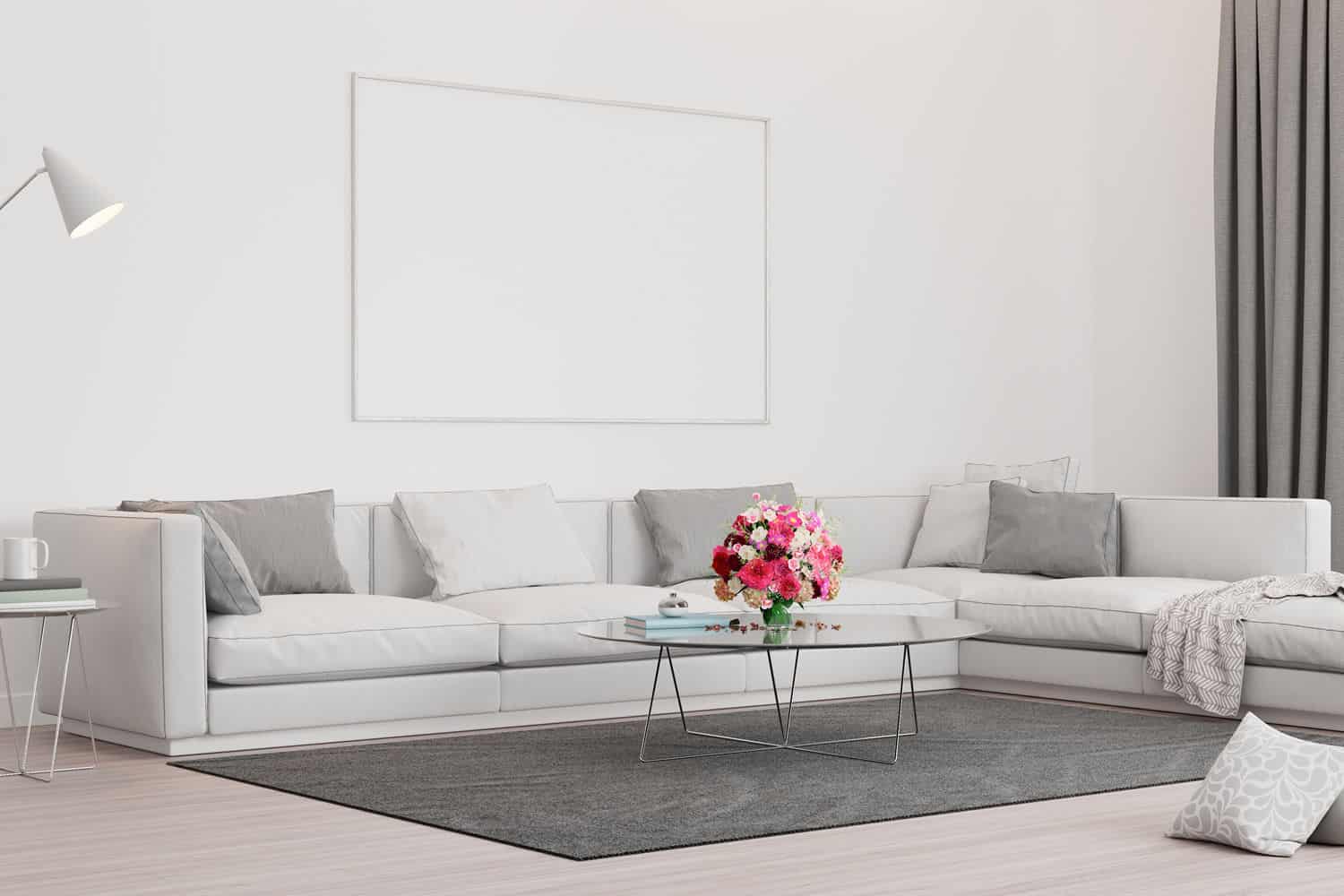

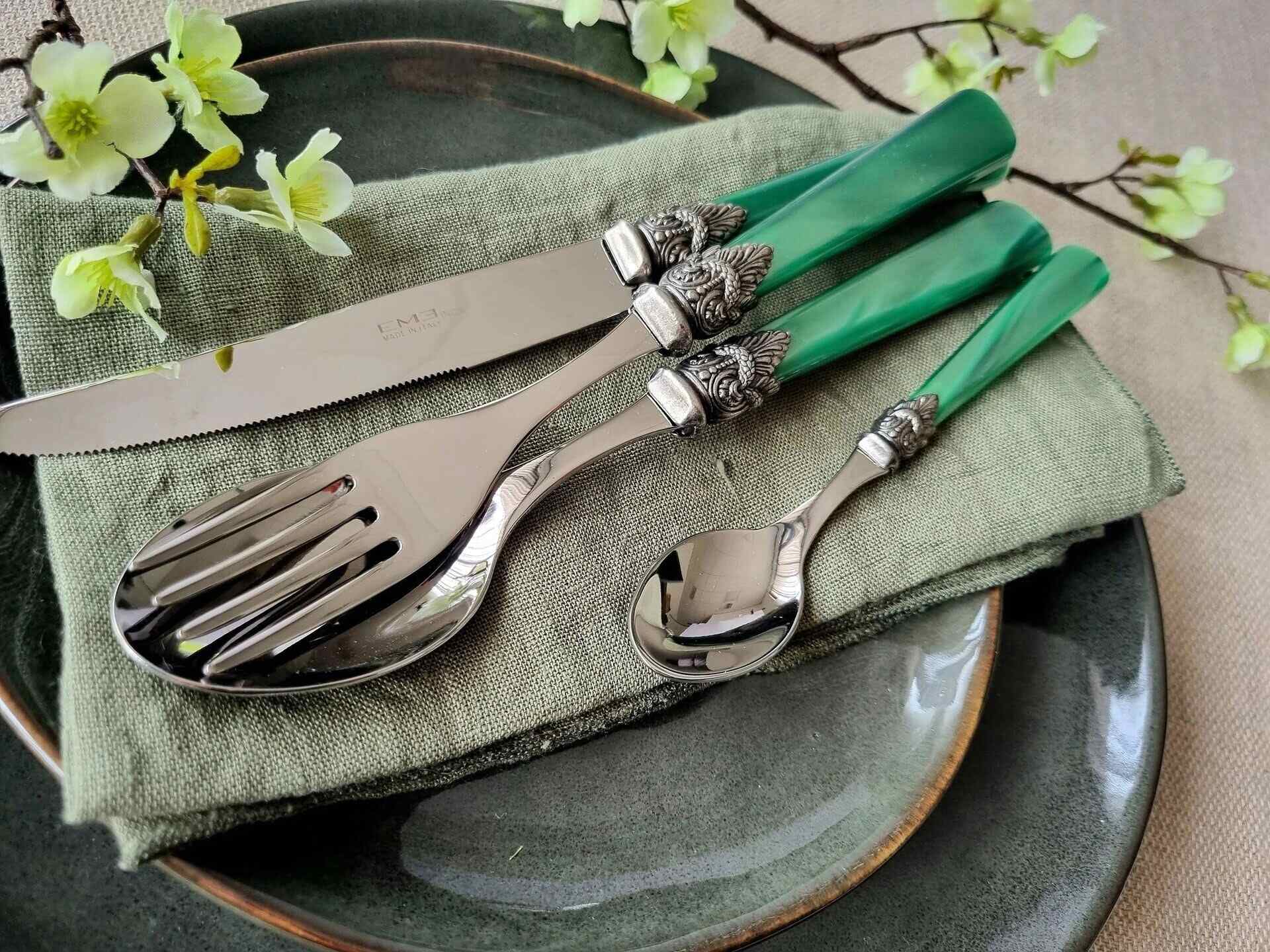

0 thoughts on “What Are Wicker Baskets Made From?”